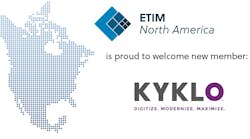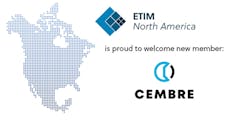VerticalNet. Electriciansweb. E-Bricks. SourceAlliance. EqualFooting. BuildNet. PurchasingCenter.
Do you remember any of these companies? Fueled by venture capital, they were going to revolutionize how the electrical, construction and MRO marketplaces worked. Distintermediation was in, and distribution was out. Electrical distributors were supposed to be toast.
It didn't play out quite as some gamed it on their white boards. In most cases, it was the Web entrepreneurs who got burned, not the traditional players in the markets they assaulted.
Electrical distributors, reps and manufacturers can learn from an interesting analogy between these Web entrepreneurs and the builders of luxury hotels. In an article published in the Winter 2003 issue of California Management Review, Adam Fein, president, Pembroke Consulting, Philadelphia, Pa., compared what happened to many of the online business-to-business exchanges to what often happens to luxury hotel builders. When building these facilities, the builders invest in opulent decor, artwork, world-class chefs and over-the-top services, Fein says. To recoup their investment, they must charge exorbitant room rates. They usually don't make their money back, according to Fein, and have to sell the hotel for ten cents to the dollar to “savvy bottom fishers who make money because the capital cost is so low.”
You probably won't be interested in buying the remaining assets of one of the failed first-generation Web ventures, but there's no reason you can't be a “savvy bottom fisher” picking through wreckage for some ideas that could work for your company.
The Web is not the only way to do business, as some Internet advocates may have promoted a few years ago. But you should think of it as another tool you can incorporate into your operations in the years to come, as customers, vendors and other buying influences in the market demand it.
Only you know which strategies are correct for your company. One promising Internet-based technology that has produced some encouraging results is Web conferencing. Users dial into conventional telephone-based conferences but can see presentation materials, take surveys and share other data and presentations over the Web. The Vanguard Distribution Group uses Web conferencing tools for committee and board meetings. They found that vendors such as Webex and Placeware offer inexpensive and easy-to-use Web conferencing products.
As you map out your Web strategy, this article will provide a few rules of the road to speed you safely and profitably along the way.
Rule No. 1: Listen to the customer. Whatever you do with the Web, get real-world customer feedback on your plans before taking the first dollar out of your wallet to pay for any Internet-related investment. Ideally, anything you do on the Web should be done to serve specific customer needs you uncover through formal or informal surveys, focus groups and other feedback mechanisms.
As a general rule of thumb, the larger the customer, the more likely he or she will be to demand online service. If smaller electrical contractors make up the bulk of your customer base, most of them won't be asking for EDI interfaces, online ordering and other elements of Web service. But if you live and die servicing the whims of electrical maintenance supervisors in large industrials, you probably already have been asked many times to offer a full slate of Web services.
When asked how their companies used the Internet in the 2003 EC&M Reader Profile study, electrical contractor respondents said general research/information (51 percent), followed by online purchasing (35.6 percent), education and training (24.2 percent), product specification (23.2 percent), project bidding (22.7 percent), project estimating (20.6 percent), accounting (19.6 percent), and project management (17 percent).
Beware of revolutionaries bearing outlandish promises. The one thing we all should learn from the dot-com implosion is just how difficult it is to change how people do business in the distribution, construction market and MRO markets.
In the late 1990s, online project collaboration businesses like Cephren or Bidpoint came on the construction scene with plans to revolutionize how construction-related businesses bid jobs, track project progress and purchase products. One problem: Most didn't ask potential customers if the process was broken or if they were willing to change.
A similar scenario played out in the MRO market with companies like MRO.com, EqualFooting.com and PurchasingCenter.com. These e-businesses and others all had different nuances. Some focused more on large national accounts, others focused on contractors. Some promoted their “reverse auction” formats, where customers could post the products they wanted to buy, and sellers bid for that business. Another common model ran orders through an online exchange and charged a transaction fee for handling the orders online. Theoretically, it cut out all of the inefficient paperwork.
Unfortunately for them, they didn't realize most potential users of their services, like electrical contractors or the purchasing agents in small factories, had little or no interest in ordering products via the Web. That doesn't mean the industry won't adopt some tools of e-business, like software that helps electrical contractors and other customers use personal digital assistants (PDAs) to order products from the job site or tool crib.
But if you run into a Web entrepreneur pitching a product they say can change how you do business, be very skeptical. Despite its inefficiencies, idiosyncrasies and insane amounts of paperwork, this industry hasn't changed much over the years.
Don't overlook online purchasing, but don't expect it to take the place of conventional ordering processes anytime soon. When people think about what electrical distributors could or should be doing on the Web, they often mistakenly think first of online purchasing. This seldom is what your customers want. Online sales probably account for less than 10 percent of total electrical industry sales.
In a survey of over 300 Canadian electrical contractors done by Pembroke Consulting, Philadelphia, for the Electro-Federation of Canada, only 14 percent of the large contractors and 10 percent of the smaller contractors ranked ability to order online as very important or extremely important. Access to online product information was more important to them, with 46 percent of large contractors and 32 percent of smaller contractors, respectively, relying on electrical distributors for online product information.
Learn from the masters. Let's face it. Your online efforts will never be as extensive as Grainger, which does millions of dollars of sales through its online storefront. But that doesn't mean you cannot learn from Grainger about the importance of analyzing customers' buying habits before opening an online storefront. They know their customers and their customer's online purchasing habits. Your potential customers have been buying online from Grainger since 1996. This year, the company expects to do well over $400 million in online sales. That dwarfs the online sales of any other distributors.
No one understands the potential and pitfalls of online storefronts better than Grainger. But for all this company's experiences with Web sales, online orders account for less than 10 percent of total sales. In one of his online newsletters, Bruce Merrifield, Merrifield Consulting Group, Chapel Hill, N.C., said distributors that compete with Grainger can learn from its approach.
“W.W. Grainger spent gazillions exploring many Web-based strategies, and like all consumer catalog companies, they have found Web order entry for regular customers works well… Grainger's year-to-year growth rate for Web order-entry sales is starting to level off at about 8 percent of their total sales. Most of these Web sales are not to new customers, but to old ones who prefer to buy on the Web. Web-enabled communication between all players in distribution channels continues to grow in many different ways.”
Clean up your Web site. Don't do any more than you can do well on the Web. If you just want to offer driving directions, branch hours, an “About Us” page and e-mail links for key personnel, that's fine.
Bring business software providers into the earliest of discussions on any electronic commerce activities you are considering. As you plan any venture into online storefronts, electronic commerce or other e-business activities, use your business software providers as a resource. The big software vendors have experts in e-business who can help you blend whatever facet of e-business you need into your day-to-day business operations.
Get on board with the IDW. Imagine a central depository of accurate data on several hundred thousand electrical products, accessible online. This resource has proven its ability to cut down on costly keyboarding errors during order-processing, and it saves on ungodly amounts of paperwork. It's run by industry pros, not by some Web entrepreneurs trying to make their MBA thesis a reality.
This vision is the electrical wholesaling industry's Industry Data Warehouse (IDW). The most forward thinking electrical companies already reap its benefits.
In an era when the difference between profitability and red ink can be a few percentage points, it's an e-business tool that can really make a difference on a distributor's bottom line.
Run jointly by the National Electrical Manufacturers Association (NEMA), Rosslyn, Va., and the National Association of Electrical Distributors (NAED), St. Louis, the Industry Data Exchange Association (IDEA) got its start five years ago. Today it has more than 200 distributors and more than 120 manufacturers as subscribers, with 85 percent of electrical product stock-keeping units in its database.
IDEA estimates that with cleaner product and pricing data being uploaded directly by manufacturers to the IDW, the average manufacturer can generate an additional $97,000 in profits for every $10 million in sales. Likewise, through the IDW, the average distributor can generate an additional $73,000 in profits.
EWWEB.COM WEB EXCLUSIVES
Electrical Wholesaling's new Web site at www.ewweb.com offers some exclusive information on e-business.
There's a worksheet in PDF format to help you analyze your use of the most common Web tools, prioritize how important they are now and look at how important they could be for the future of your business. To download the worksheet, just click on, “How Does the Web Touch Your Business?”
You will also find “E-Business in the Electrical Industry From A-Z,” a glossary that can help you learn about the people, companies, trends and ideas central to the history of the Web in the electrical business.








